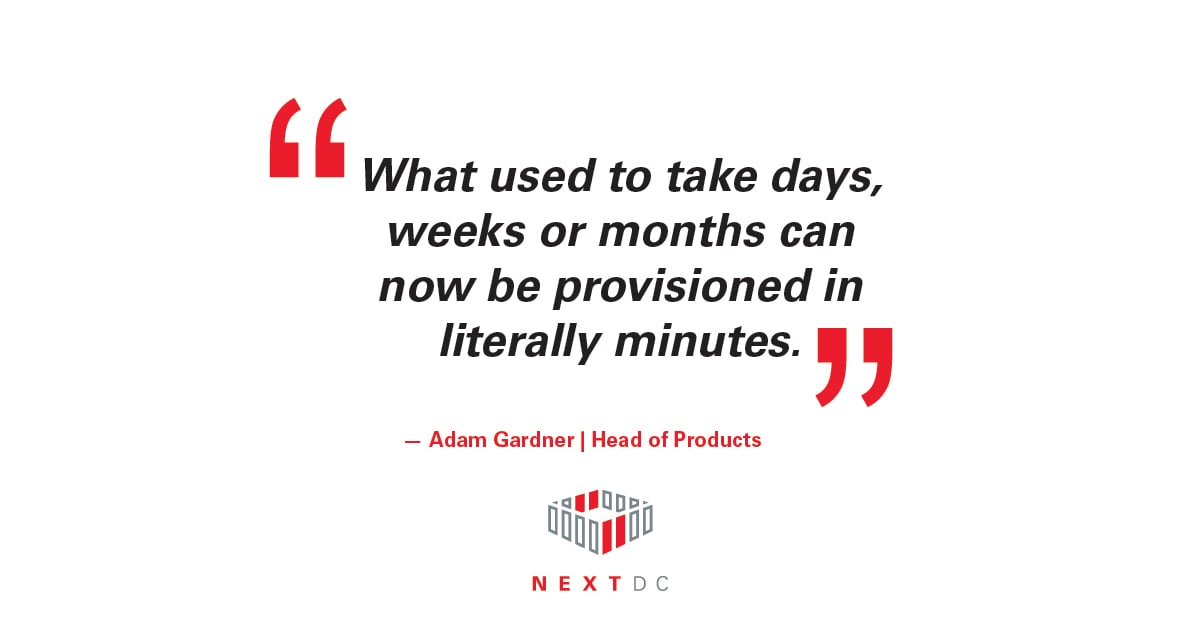Written by Adam Gardner - Head of Product
When speaking to his investments, Warren Buffet frequently notes; “Price is what you pay, value is what you get”. It’s a well-known philosophy that reverberates across society, whether it’s your home purchases or investments made in your business.
With the explosion of Hybrid and Multi-Cloud deployments, there’s a vast array of methods that can be used to connect your digital infrastructure. Often when talking to our customers I hear that whilst price is a factor, it’s not the key factor, particularly when seeking to achieve the right balance of flexibility, scalability, agility, security, and performance.
Keeping your options open
As data volumes surge, organisations are increasingly looking for ways to streamline the myriad of complex digital transformation strategies. Deciphering which connectivity architecture is best to position clouds, teams, data and critical applications as close to each other as possible is most prominent, as workloads and data sprawl.
Software Defined Networks (SDNs) have created disruptive service delivery models that are much better suited to evolving business priorities and ever-increasing transformation complexities. Often the requirement to scale and adapt extremely quickly becomes a core element of success, as we’ve seen over the past 12 months. Organisations that are able to adapt and scale rapidly, are the ones who experience the greatest success.
In a network environment, these elements also become key criteria for success where demand for new connectivity services is multiplying. Naturally cost is, and should be, a consideration. Yet focussing purely on the direct costs rather than taking a holistic view of the total cost of ownership - in an environment where services are turned on and off with regularity – is an easy mistake to make.
True cost of cloud connections?
Each new direct connection to a cloud platform comes with its own time-metered cost, plus additional fees based on traffic volumes. Exact costs vary from platform to platform, but that revenue model is largely standardised across the Hyperscale cloud providers. Traditionally, to physically connect you could commission a dedicated point-to-point link from your physical infrastructure to the cloud infrastructure platform selected. Indeed, sometimes this is exactly the approach you should take. In fact, we take our motto “Where the cloud lives” seriously and invest heavily in our partner ecosystem for this very reason.
Yet, this isn’t always the most effective approach. For Multi-Cloud environments, specific public platforms are often selected because of their relative price and suitability to individual workloads. Connecting via traditional physical Cross Connects can mean there are multiple rack units, fibre links and maintenance schedules to be managed, each with their own accumulating cost.
On paper, each of these individual services may be cheaper than commissioning a port onto a virtual SDN platform such as AXON. However, the value of AXON materialises when you provision multiple services between any two points on the network through that single port; or redundant ports for those seeking high availability for mission critical workloads.
One port, all clouds
The convenience of being able to access every public cloud in Australia, local cloud providers and AXON’s entire data centre network in itself represents significant value to your strategy. Our customers are often surprised (yet delighted) to hear that AXON extends beyond NEXTDC facilities into other facilities to truly enable comprehensive access to any cloud or IT service, anywhere.
The key enabler for Multi-Cloud is virtual connectivity, an architecture that’s inherently more flexible and scalable. Being able to spin up new virtual instances and deploy workloads quickly, cost-effectively, and securely – then terminate them when no longer needed, only paying for what you use is what cloud is all about. The same rule should apply to the underlying interconnectivity strategy. If you have to physically connect every time you want to deploy a new workload, your time to operation can be unnecessarily extended, whilst adding additional service management complexity.
As a layer 2 service, performance is on par with direct Cross Connects and with no traffic interrogation taking place the security of each connection is assured. Self-provisioning all aspects of your service also ensures you have complete control and visibility over every connection.
When fully utilised, the cost savings from leveraging a nation-wide virtual connectivity platform that accesses the major cloud platforms, ICT services providers and data centres across the country rapidly stack up when you factor in all of the sundry costs. These include Cross Connect fees, point-to-point and in-rack cabling costs, reduced in-rack space requirements for associated network equipment and the costs of remote hands services to have new ports patched into a rack.
More options, less capital expenditure
In today’s world, everything is urgent. New models for digital connectivity are designed to provide faster turnaround time for the provisioning of services.

When it comes to connectivity, requirements vary on a case-by-case basis so it makes sense to retain complete flexibility in how connections are made with one eye kept on making sure you optimise network resilience.
To fully capitalise on agility, flexibility and scalability opportunities, connectivity is more important than ever. To manage complexity, risk and compliance, network managers need holistic visibility into every point-to-point circuit across the organisation. They need to easily visualise who is using services and the purpose they serve. Only when you have this level of control can you start to optimise the cost and performance of infrastructure. SDNs introduce this ease of management and facilitate making changes on demand, when required.
Creating order from chaos
Irish poet and playwright, Oscar Wilde didn’t live through a digital revolution, but he did wax lyrical in a time of great change and innovation. His sentiments from a different era echo through the ages and retain their relevance today; “Nowadays, the people know the price of everything and the value of nothing.”
Reach out to our team if we can help you extract maximum value and efficiencies from your Multi-Cloud environment.


